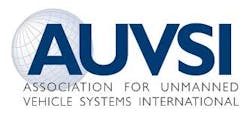FAA begins selection process for unmanned aircraft systems test site
The FAA request follows Congressional language in a defense spending bill (passed 31 Dec. 2011), and FAA reauthorization bill (passed 14 Feb. 2012), requiring the FAA to create six UAS test sites around the United States.
Congress also calls for the full integration of UAS in public airspace by 30 Sept. 2015. So, in addition to allowing for more UAS operations, the goal of the test sites is to help the FAA develop the regulatory framework to govern the widespread use of UAS in the national airspace.
“Unmanned aircraft will be the next big revolution in the aerospace industry, and the creation of these test sites will mark the beginning of what will one day be a common occurrence, manned and unmanned aircraft safely flying together in the same airspace,” says AUVSI President and CEO Michael Toscano. “AUVSI applauds Congress’s foresight on creating these test sites, and looks forward to working with the FAA, aviation stakeholders, and the general public, to ensure UAS operations are conducted in a safe and transparent manner.”
There are currently dozens of non-military uses of unmanned systems, including law enforcement, firefighting, border surveillance, disaster surveillance, aerial photography, wildlife monitoring, agriculture applications, news coverage, mapping, and more. The field of unmanned systems is changing rapidly, that it is likely we have not fully comprehended all of the potential uses; however, one thing is clear unmanned systems are here to stay, adds the AUVSI spokesperson.
The public comment period will be open for 60 days following the official publication in the federal register on Friday, 9 March. Responses will be limited to 2.5 pages per question, with a maximum response of 20 pages (using 12-point font size).

